Marion Fire Station 1

-
ClientCity of Marion
-
SQ. FT.21,214
-
Budget8,969,208
-
Market
-
Year2021

- 2024 · American Institute of ArchitectsArchitecture Honor Award
- 2024 · Fire Industry Education Resource OrganizationHonor Award, Wellness Award
- 2023 · ArchelloGovernment Building of the Year
- 2023 · American Institute of ArchitectsJustice Facilities Review Award
- 2023 · Architizer A+ AwardsSpecial Mention
- 2023 · International Living Future InstituteStephen R. Kellert Biophilic Design Award
- 2023 · Rethinking The Future AwardsWinner, Public Building (Built)
- 2023 · American Institute of Architects, Iowa ChapterImpact Award, Honor Award
- 2022 · American Institute of Architects, Central States RegionHonor Award
- 2022 · International Interior Design Association, Great Plains ChapterHonorable Mention
- 2021 · American Institute of Architects, Iowa ChapterHonor Award
This two-level 21,214-square-foot fire station in a rapidly growing community reduces response time, establishes a strong and transparent civic presence, and uses biophilic design principles to support fire fighters physical and mental wellness.
Challenged by the fire chief to design a station that would be a national benchmark for how biophilic design can reduce PTSD in fire fighters and inspired by the 14 Patterns of Biophilia, the following design principles were employed to support fire fighters physical and mental health.
- Visual Connection with Nature: Full-height glass in the apparatus bay and in the living spaces and two exterior decks, provide a strong visual connection to the community and natural surroundings.
- Non Visual Connection with Nature: Manicured grass, prairie, and a tree grove as well as a retention pond, invite wildlife to the site.
- Thermal and Airflow: A geothermal system is both efficient and creates a comfortable interior environment. All living spaces and offices have operable windows.
- Presence of Water: A retention pond is multi-functional as a storm water solution as well as a site for water and ice rescue.
- Dynamic & Diffuse Light: A trellis around a large outdoor patio creates dynamic shadow patterns throughout the day against the ipe wood deck and shou sugi ban exterior.
- Connection with Natural Systems: Exterior gathering spaces and glass provide a direct connection to the circadian rhythms of the day as well as the seasonal changes. These connections help with sleep wake cycles which are critical for fire fighters well-being.
- Biomorphic Forms & Patterns: Carpet in the multi-purpose training room mimics moss and stones. Tiles in a hexagonal shape commonly found in nature, spherical lights, and glass etched with branch patterns all bring biomorphic forms and patterns to the space.
- Material Connection with Nature: The exterior skin is shou sugi ban wood accented with cedar and ipe wood decks and exposed structural wood decking inside.
- Complexity & Order: The building was designed on a strict module which contrasts with the complexity inherent in the exposed wood elements and the biomorphic forms and patterns of the finishes and lighting.
- Prospect & Refuge: Exterior decks provide much needed respite from the stressors of a first responder’s job. The smaller private deck and larger deck create both prospect and refuge. While it is important for fire fighters to have this amenity, they also do not want to be on display to the public, so these decks are enclosed by a trellis that provides both vertical and horizontal shading and privacy.
- Risk/Peril: A glass railing and a sedum green roof eliminates the perception of a vertical edge on the exterior decks, thus creating a stronger connection between the patio and the green roof. Additionally the training stair and platform puts firefighters in simulated risk situations to prepare them for their real work of saving lives.
The implementation of these biophilic principles is having a profound effect on the fire fighters wellbeing, including stress reduction and increased awareness and cognitive ability. The addition of the features such as escalating alarms and circadian rhythm-based lighting further promote mental and physical wellbeing.
“If everybody could work in a place like this, they would be so happy. By being in a building that they feel calm and comfortable it helps with relationships as well as their every day stresses.”
— Deb Krebill, retired fire chief, Marion Fire Department
Photo Gallery
The plan and massing is anchored by a two-story apparatus bay. Full-height glass doors on both the north and south elevation maximize daylight and establish a connection to the community. Extending east, shou sugi ban wood, which is charred using controlled fire, wraps the living and office spaces to add depth, texture, and contrast with the smooth plane of the glass. Interior spaces are complimented by two ipe wood terraces sheltered by a roof and wall trellis. A green roof surrounds all the living spaces and sleeping rooms.
The lobby is stretched to become the primary first level circulation; it mediates between a tree grove and a history wall. This welcoming, light filled space allows direct views into the apparatus bay and displays the fire department’s rich history, pride, and tradition.
Strategic sequencing of spaces, including a decontamination clean room, between the bays and the office and living areas mitigate exposure to fire and ash carcinogens. On the opposite side of the bays, the hose-drying tower also serves as a training area to simulate rescues. Training opportunities continue at the exterior where the retention pond is also used to train for ice rescues.
The living areas, wrapped in full-height glazing with exposed wood ceilings, include a full kitchen, a large family-style table, and a TV and gaming area to ensure the firefighters have a variety of space types to relax and recharge. Circadian lighting is used throughout to ensure the firefighters wake-sleep cycle is synchronized with natural light.
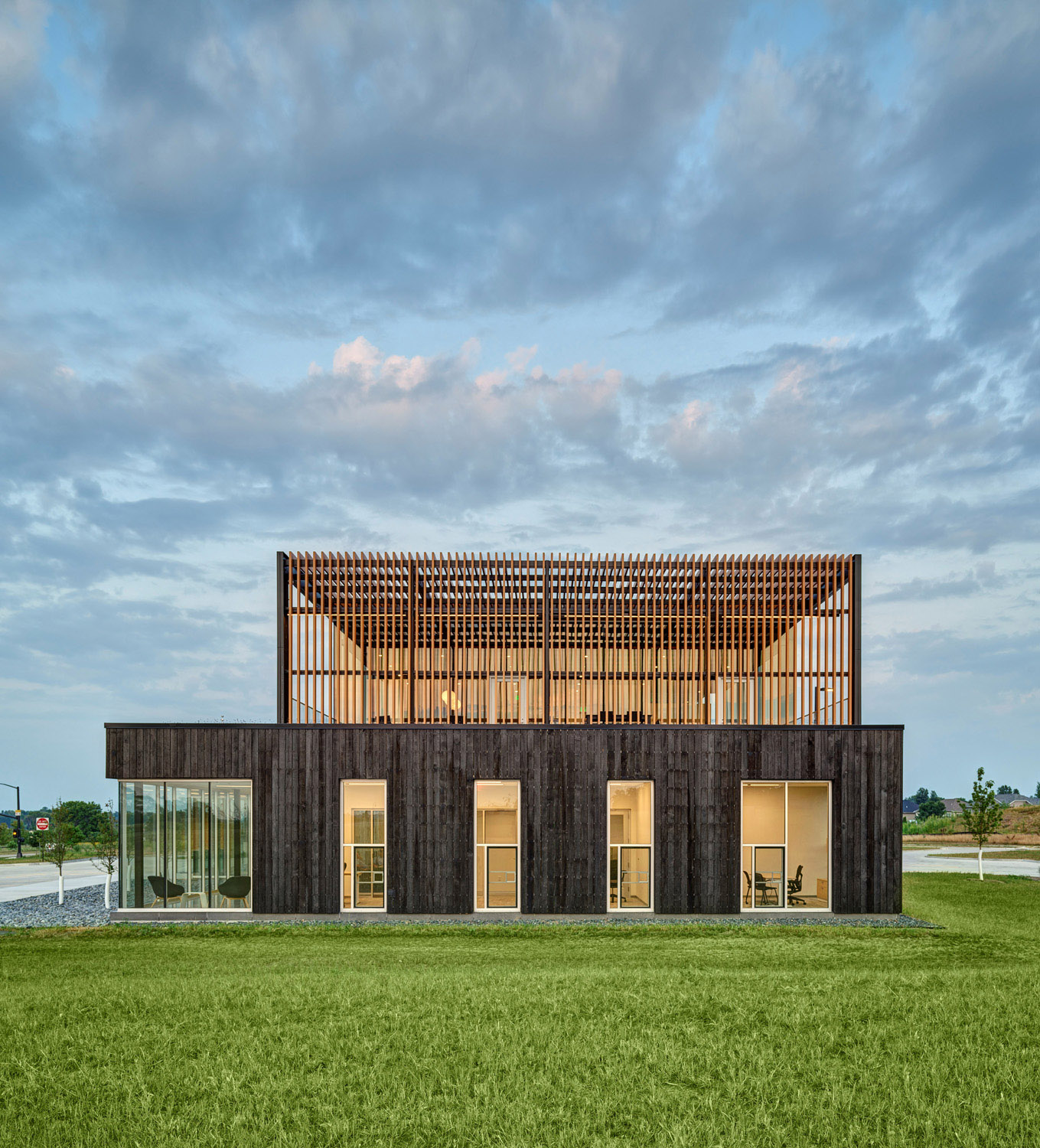
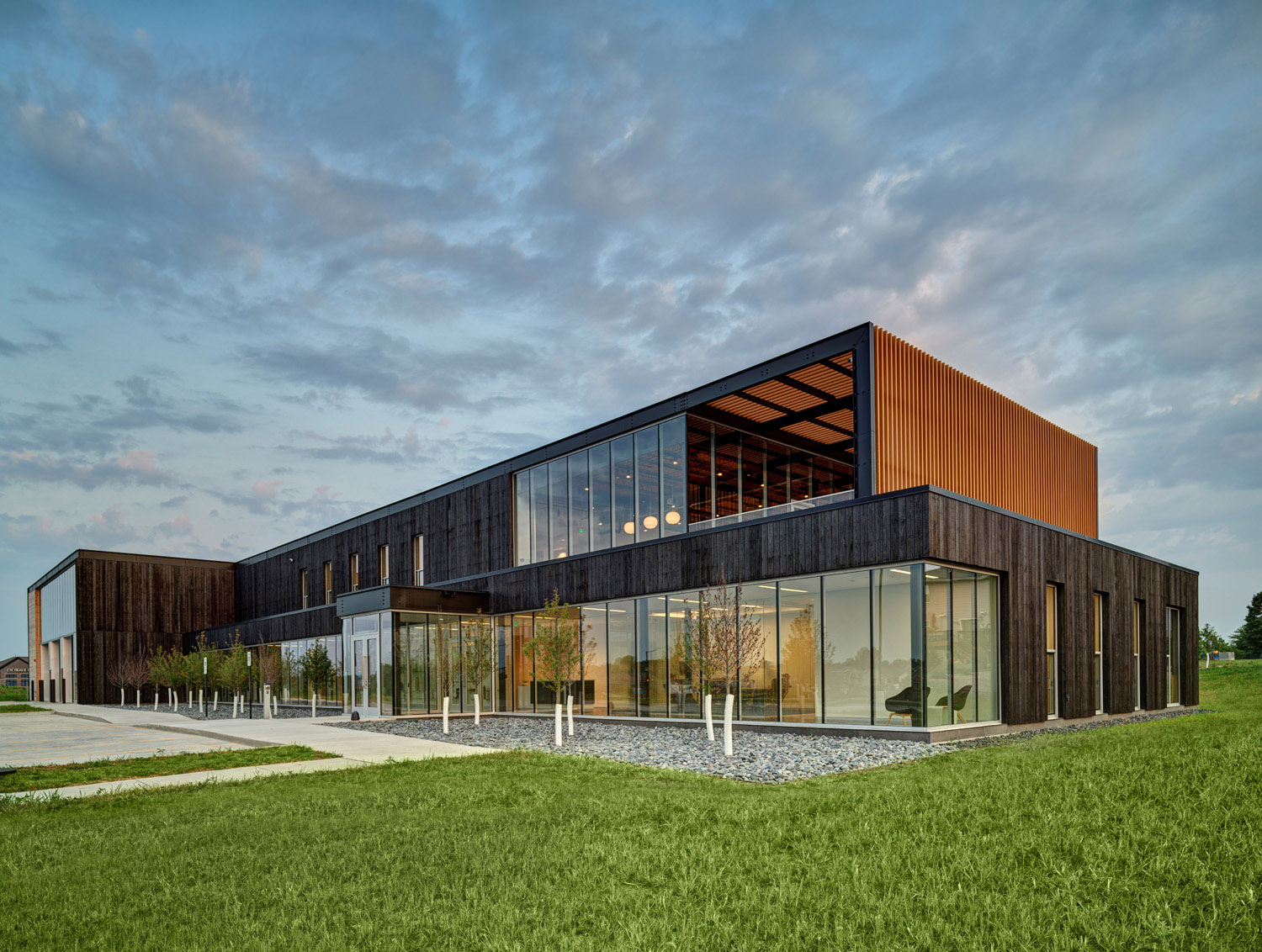

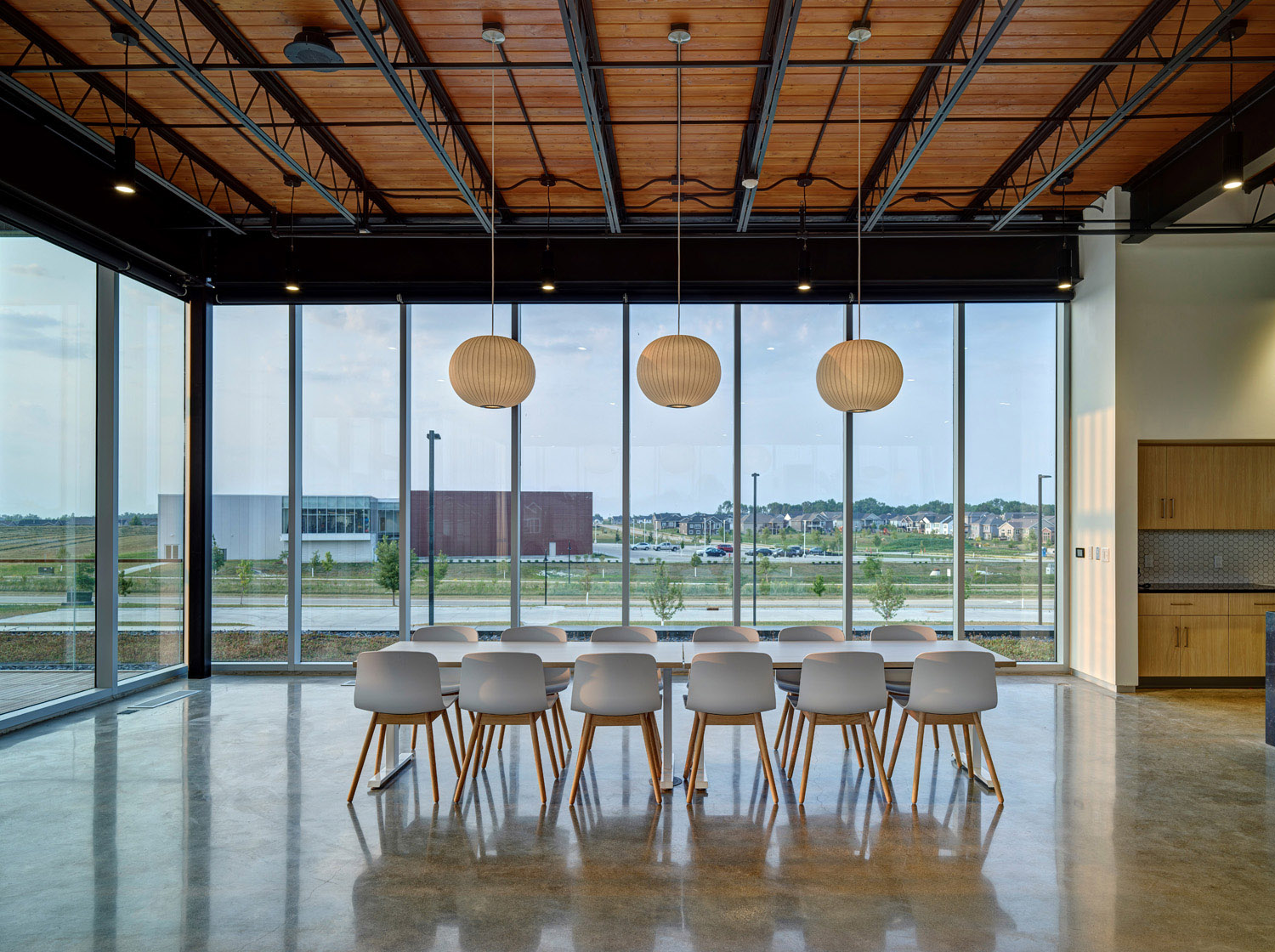
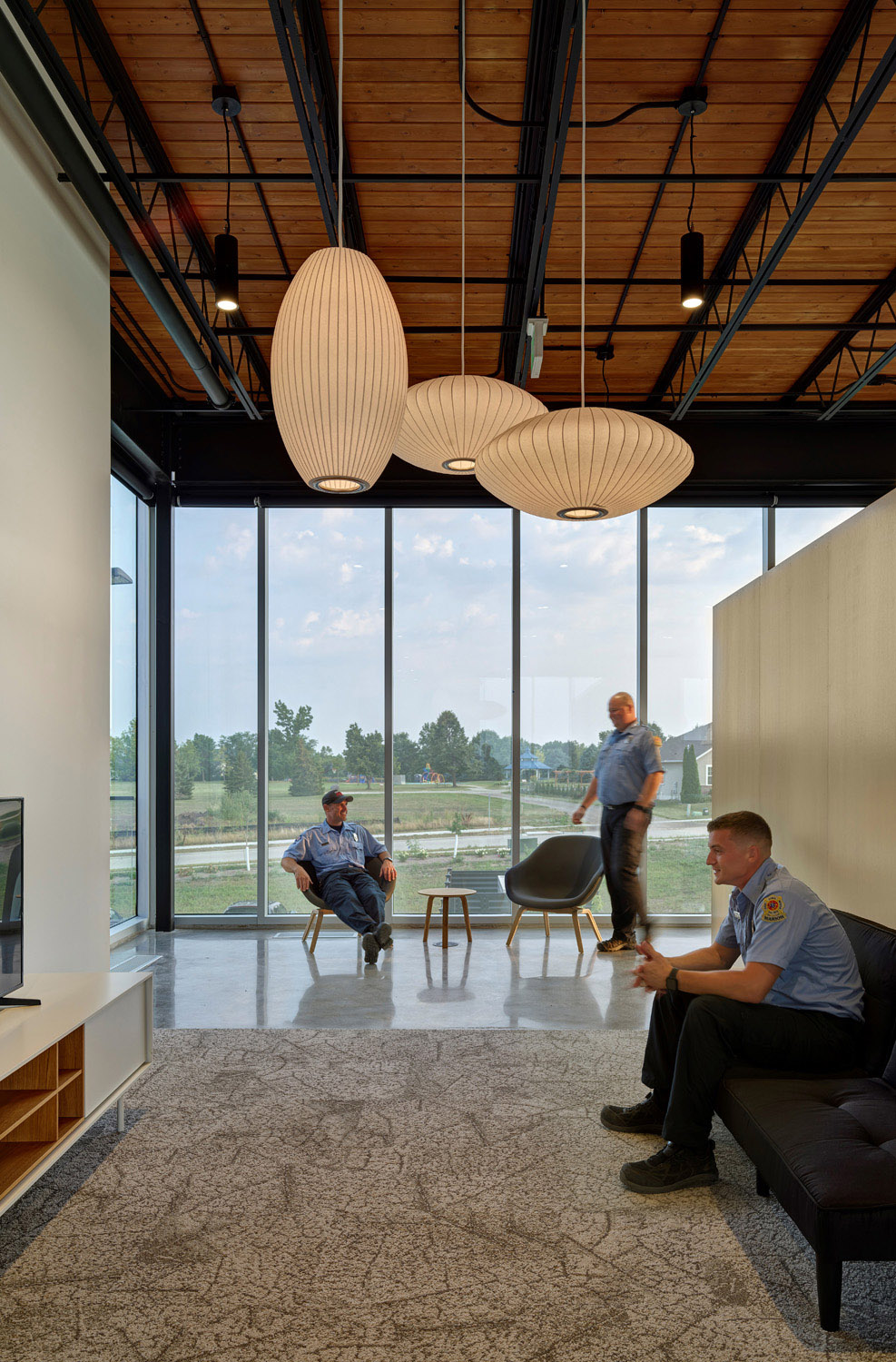
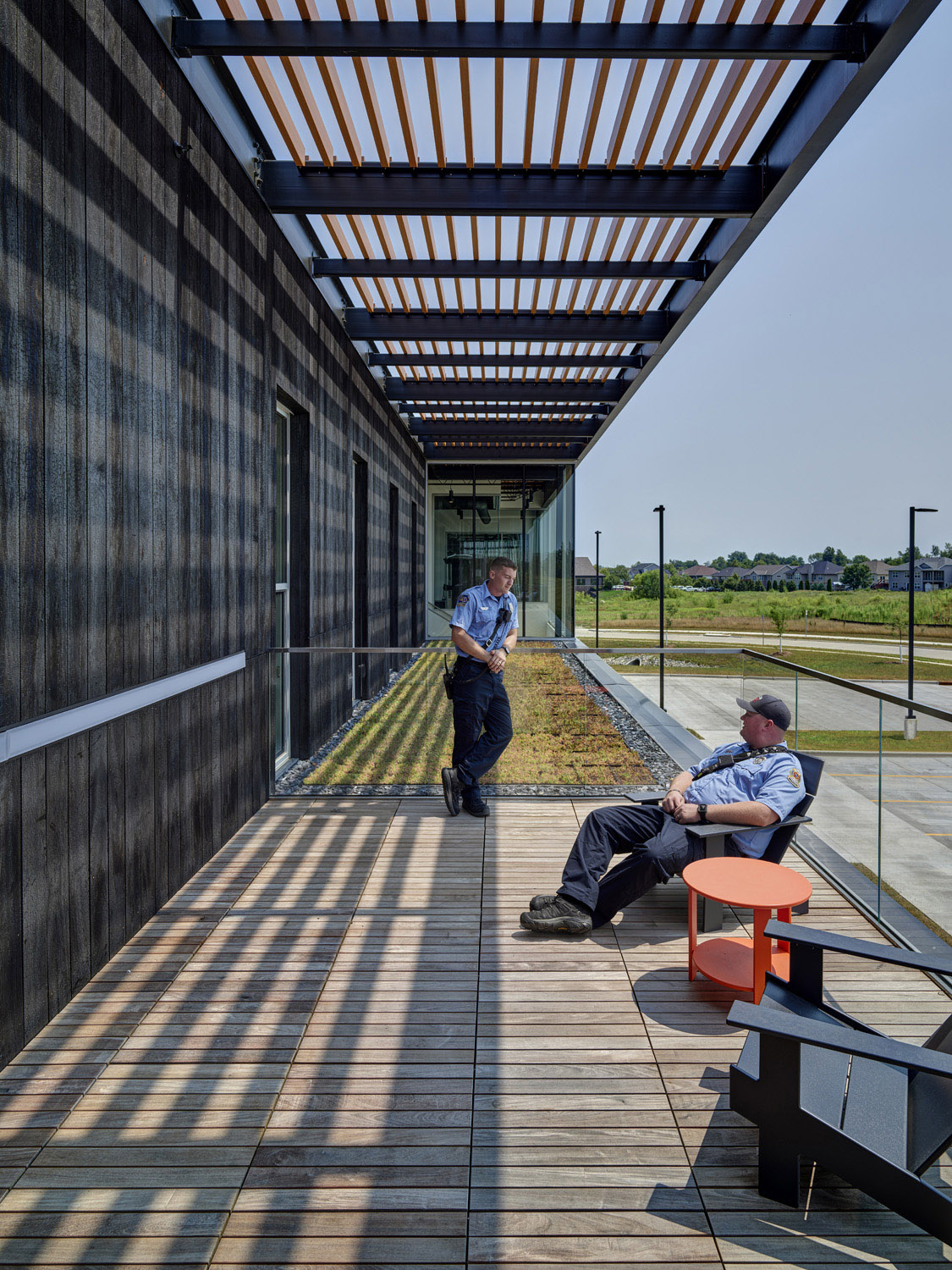
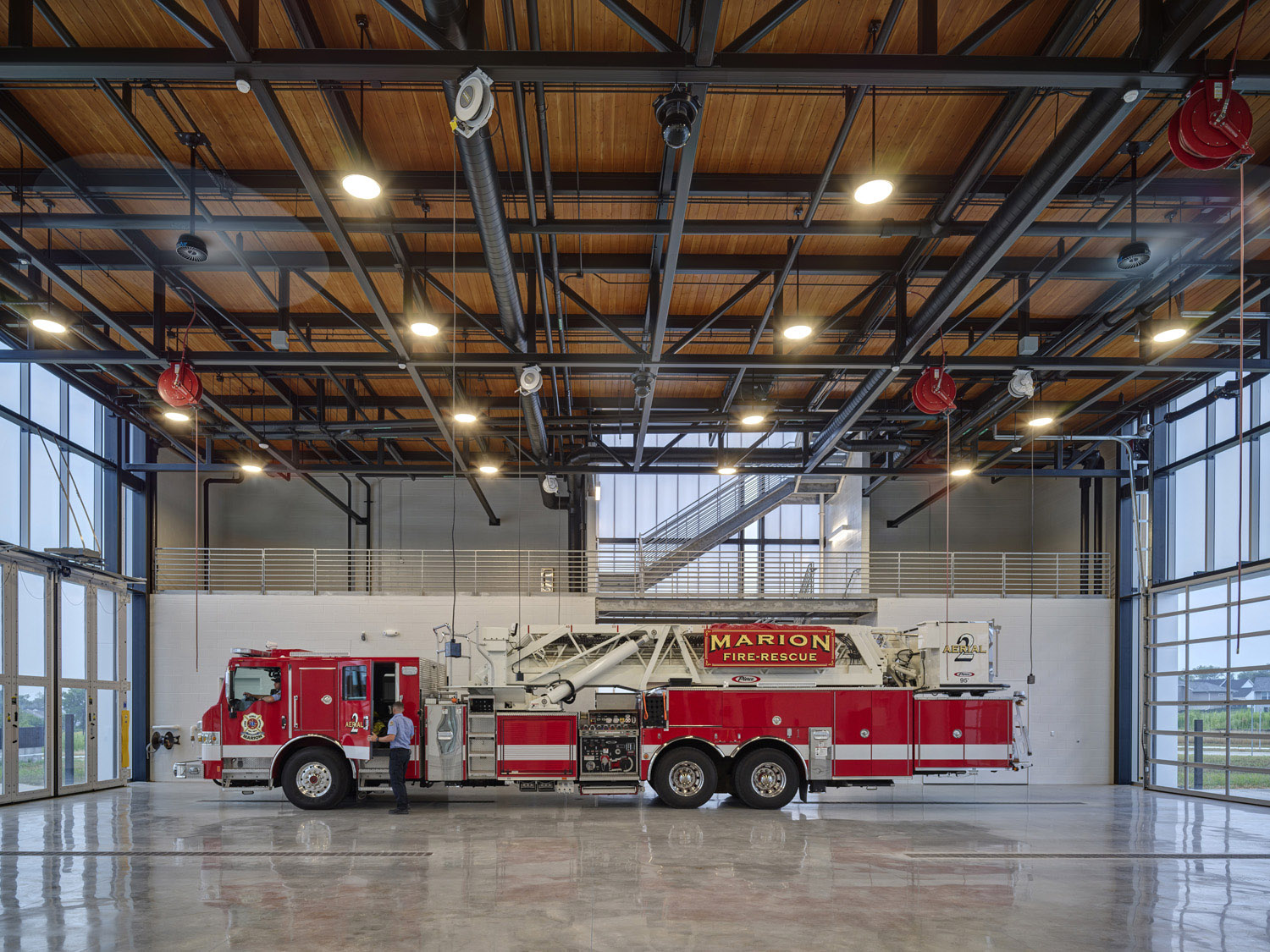
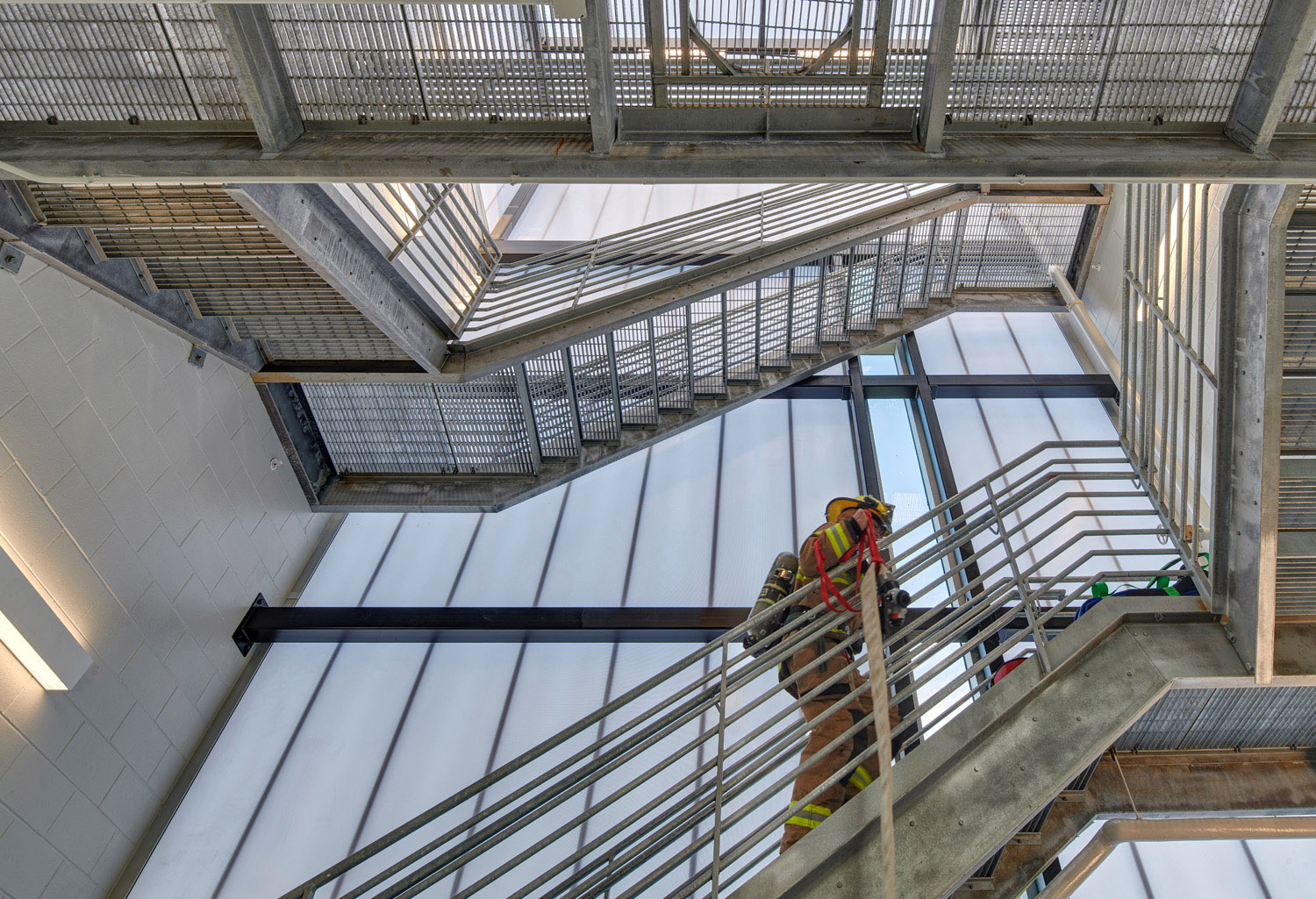
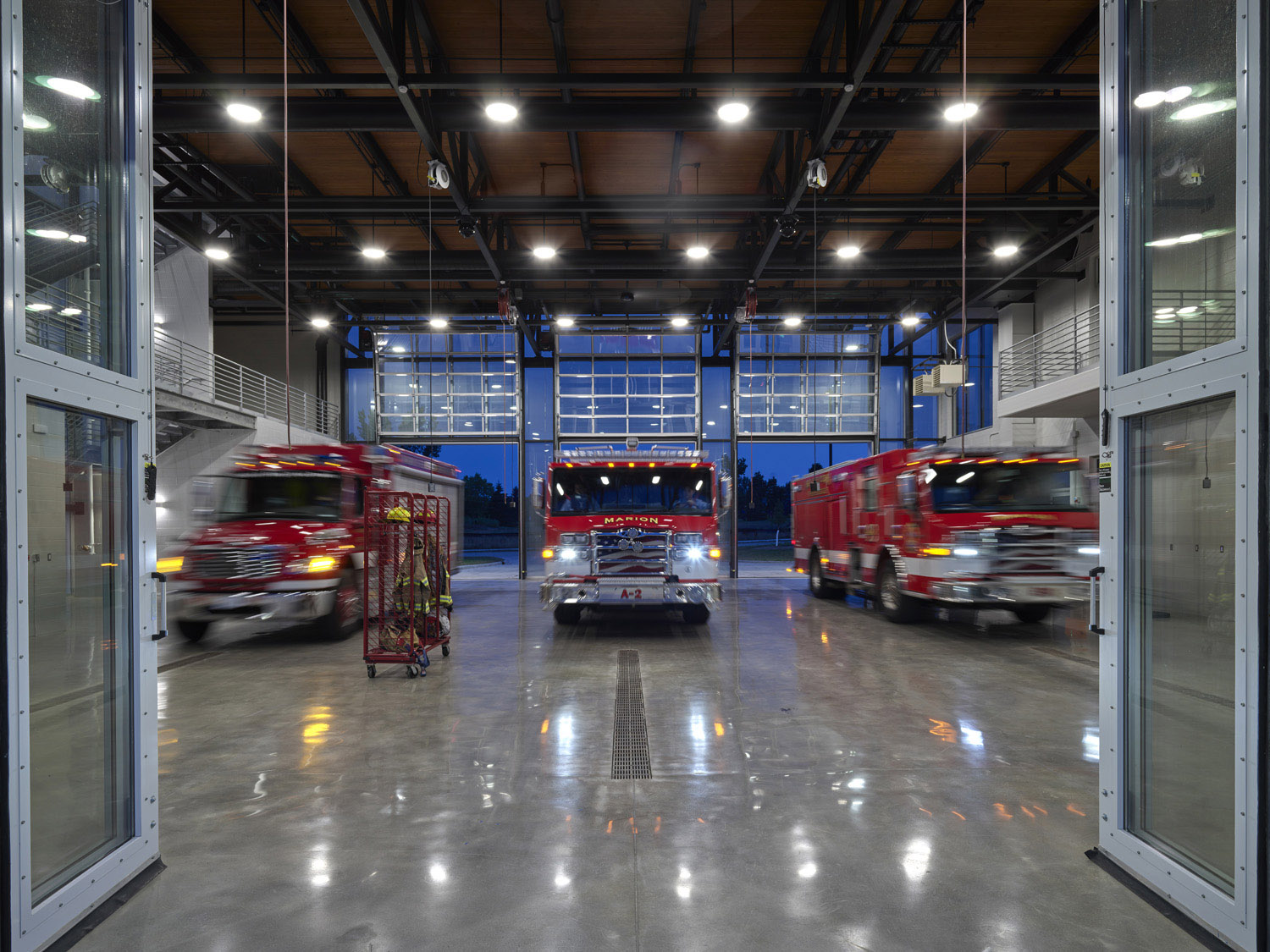
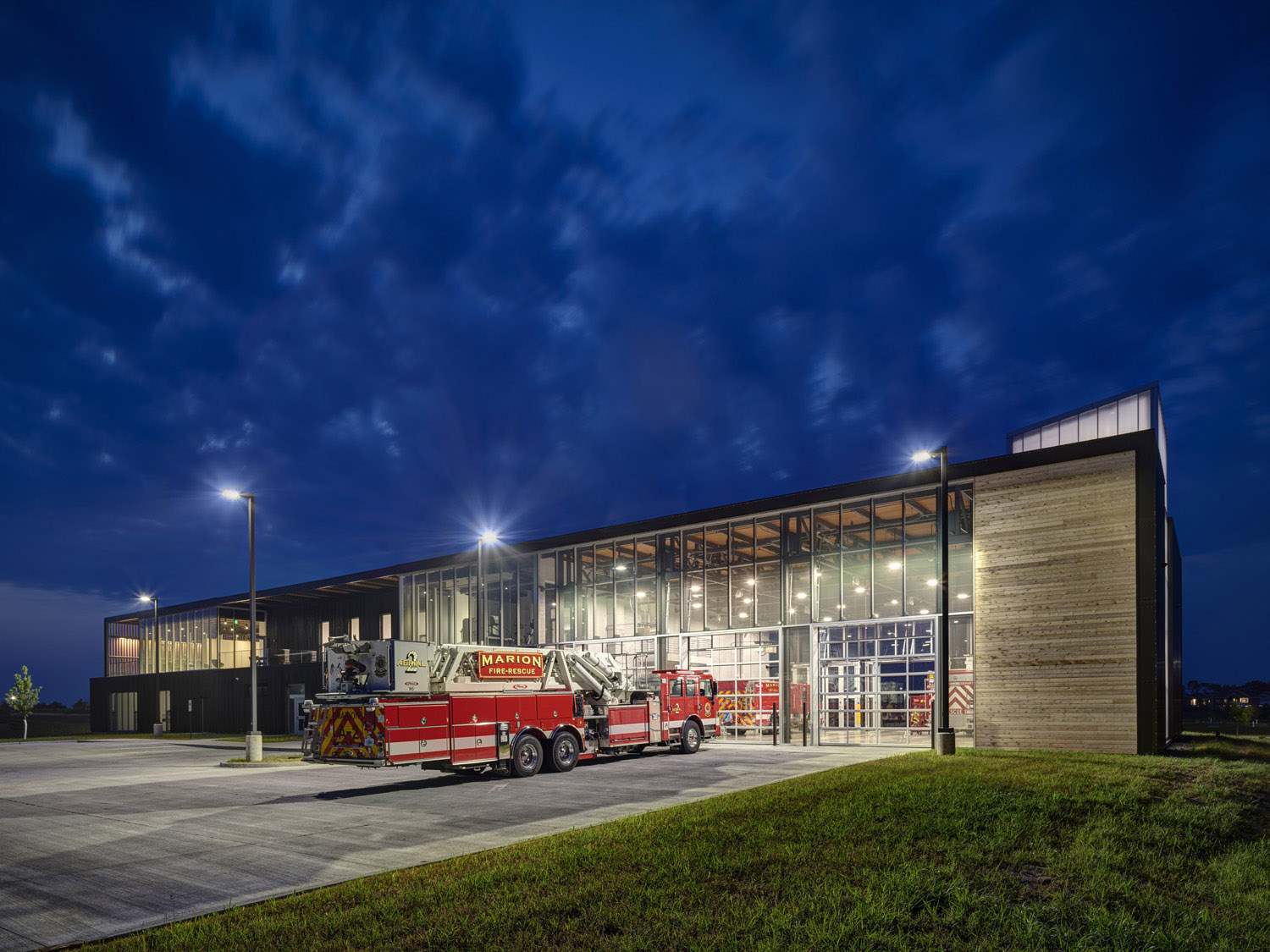
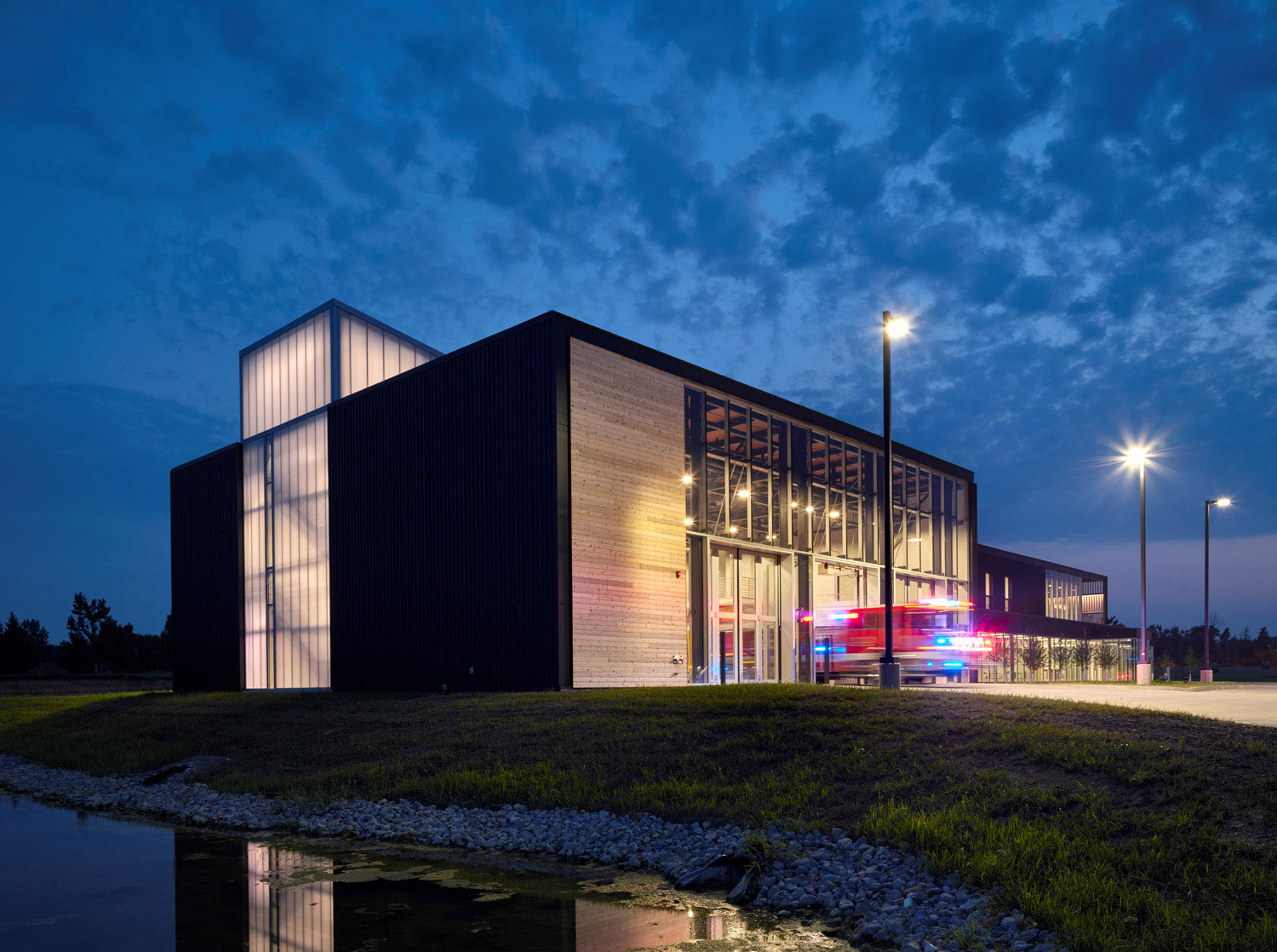
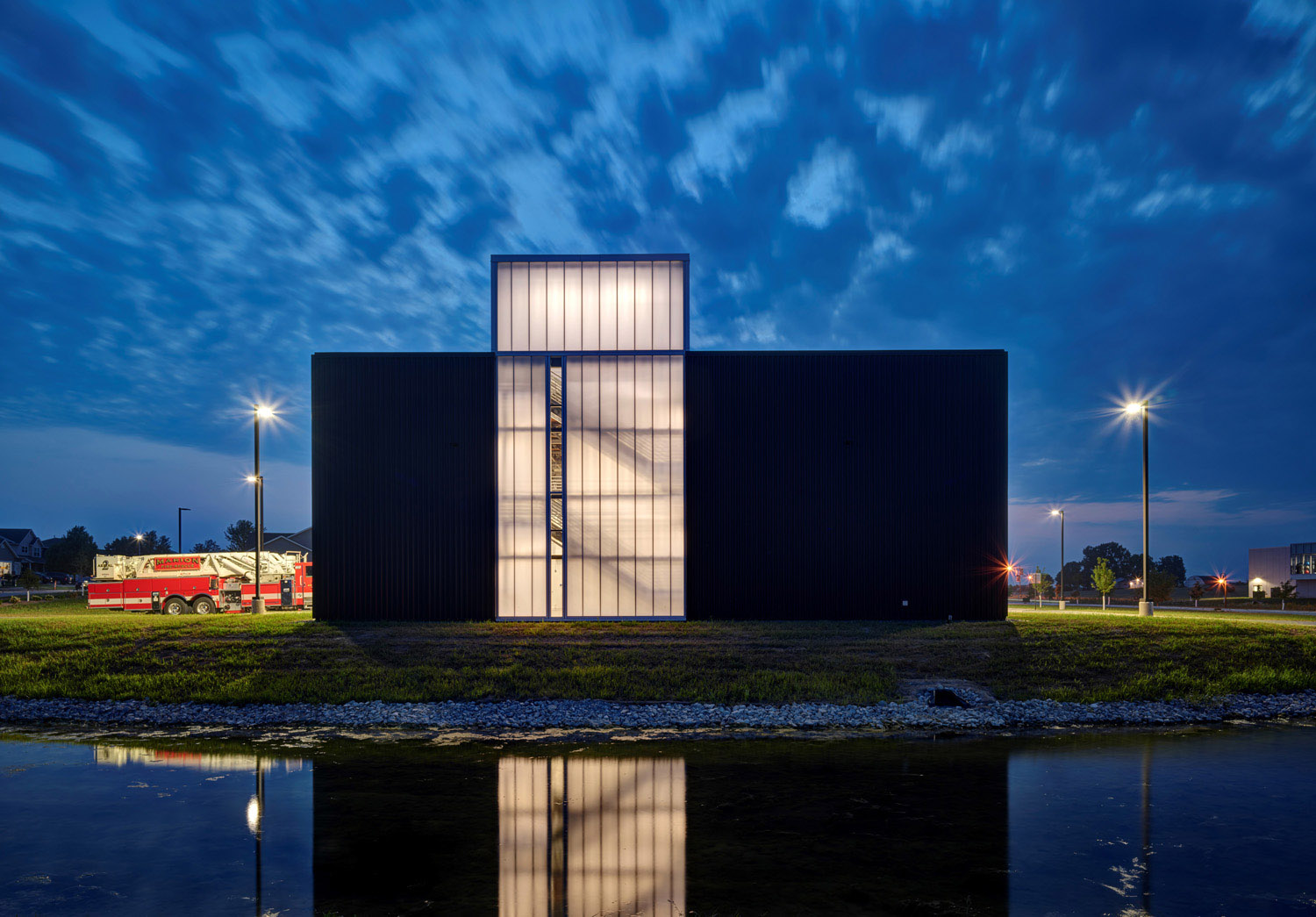
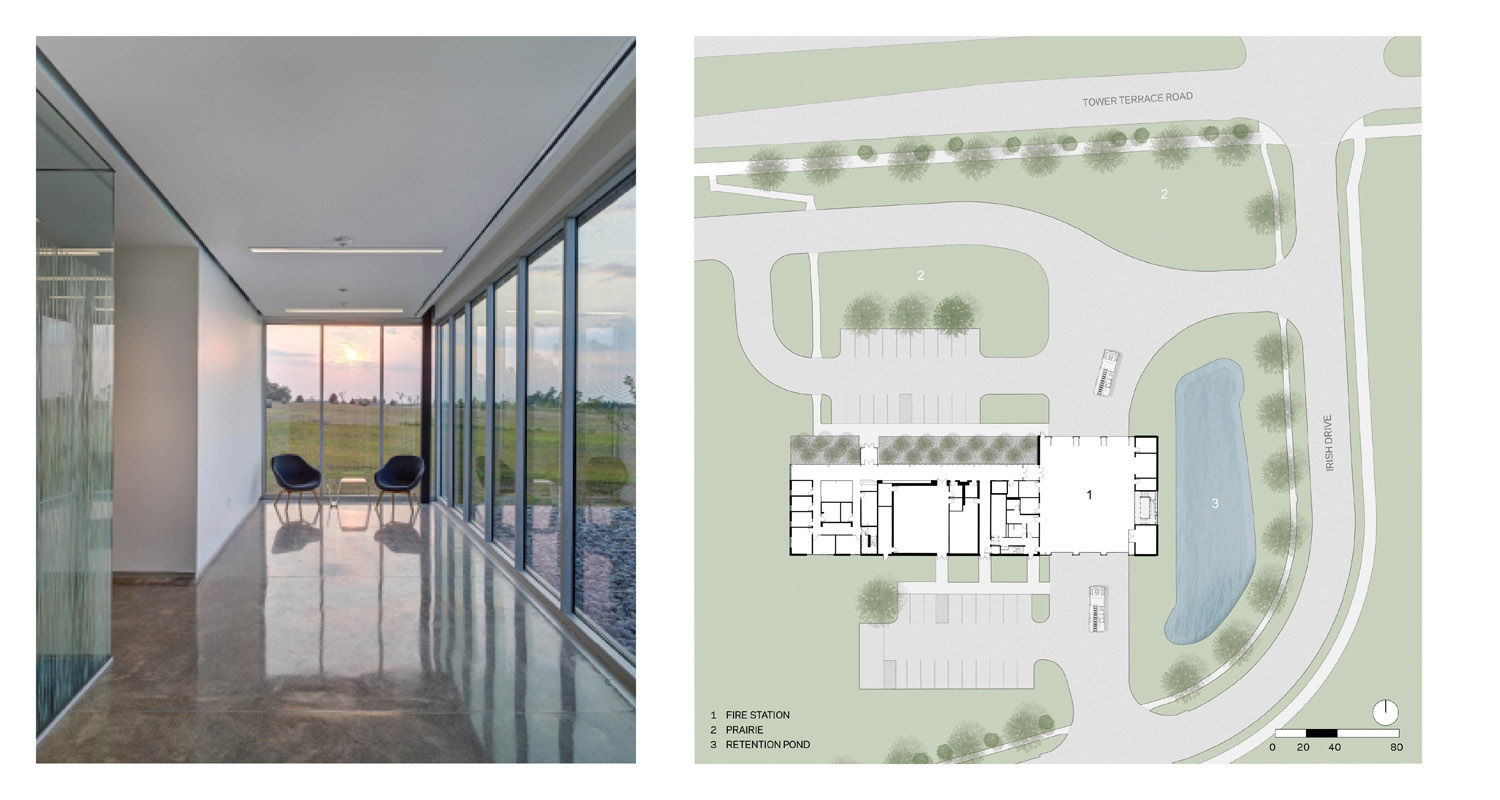
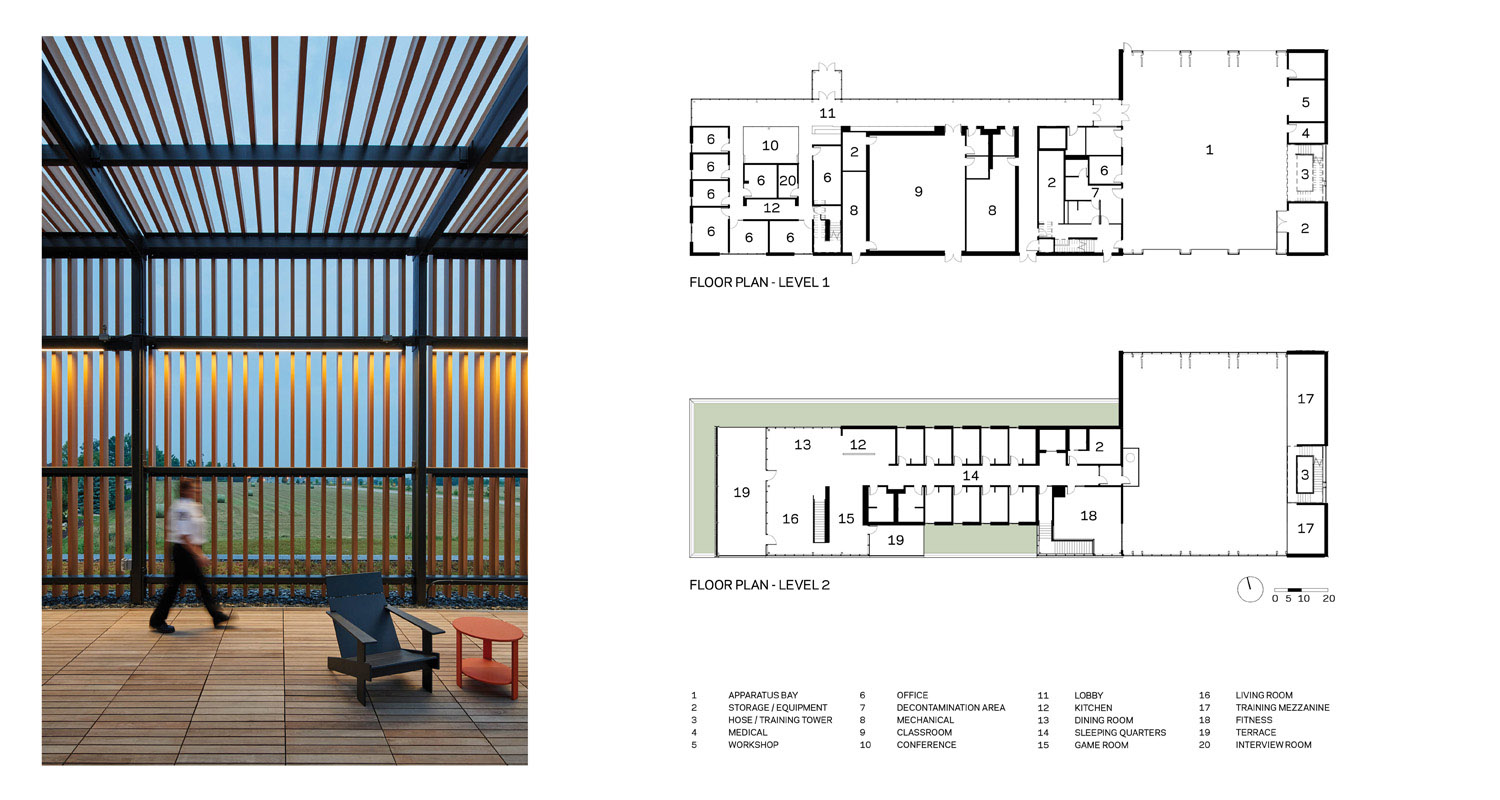
 Discover More
Discover More

